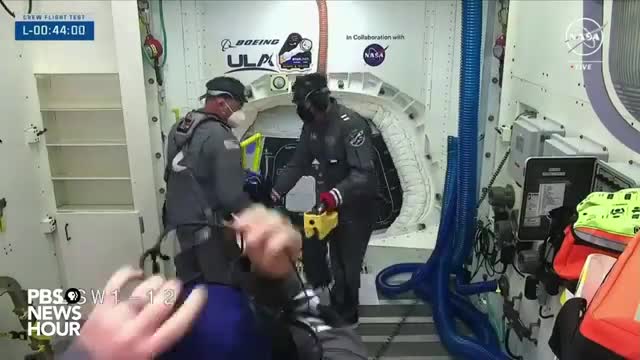NASA prepares for historic launch of Boeing Starliner with astronauts

This article was created by AI summarizing key points discussed. AI makes mistakes, so for full details and context, please refer to the video of the full meeting. Please report any errors so we can fix them. Report an error »

As the countdown to the launch of Boeing's Starliner spacecraft approaches its final moments, excitement builds within the International Space Station (ISS) flight control team. NASA astronauts Matt Dominic, Mike Barrett, Jeanette Epps, and Tracy Dyson, along with Roscosmos commander Oleg Kononenko and fellow cosmonauts, are preparing to welcome astronauts Wilmore and Williams aboard the ISS following their anticipated arrival.
The Starliner mission, which marks a significant milestone as the first crewed flight of this new human-rated spacecraft, is designed to enhance the United States' capabilities in space exploration. NASA Administrator Bill Nelson emphasized the importance of having multiple spacecraft available for human spaceflight, particularly as the agency prepares for future missions to the Moon and Mars. He noted that this launch is part of a broader strategy to ensure redundancy and reliability in space travel.
The Starliner is expected to dock with the ISS for a minimum of eight days, during which the crew will conduct various tasks, including loading cargo for return to Earth. The spacecraft's design allows for both land and water landings, providing flexibility in emergency situations. This capability is crucial for ensuring quick access to crew and cargo post-mission.
Chris Ferguson, a former NASA astronaut and Boeing representative, expressed his excitement about the culmination of over a decade of development for the Starliner. He encouraged the crew to fully embrace the experience of their flight, highlighting the importance of understanding the vehicle's performance during ascent and reentry.
As the launch window approaches, the ISS crew and mission control remain vigilant, ready to monitor the astronauts' journey and ensure a successful mission. The Starliner represents not only a leap forward in American spaceflight but also a commitment to continued exploration and innovation in the field.
The Starliner mission, which marks a significant milestone as the first crewed flight of this new human-rated spacecraft, is designed to enhance the United States' capabilities in space exploration. NASA Administrator Bill Nelson emphasized the importance of having multiple spacecraft available for human spaceflight, particularly as the agency prepares for future missions to the Moon and Mars. He noted that this launch is part of a broader strategy to ensure redundancy and reliability in space travel.
The Starliner is expected to dock with the ISS for a minimum of eight days, during which the crew will conduct various tasks, including loading cargo for return to Earth. The spacecraft's design allows for both land and water landings, providing flexibility in emergency situations. This capability is crucial for ensuring quick access to crew and cargo post-mission.
Chris Ferguson, a former NASA astronaut and Boeing representative, expressed his excitement about the culmination of over a decade of development for the Starliner. He encouraged the crew to fully embrace the experience of their flight, highlighting the importance of understanding the vehicle's performance during ascent and reentry.
As the launch window approaches, the ISS crew and mission control remain vigilant, ready to monitor the astronauts' journey and ensure a successful mission. The Starliner represents not only a leap forward in American spaceflight but also a commitment to continued exploration and innovation in the field.
View full meeting
This article is based on a recent meeting—watch the full video and explore the complete transcript for deeper insights into the discussion.
View full meeting